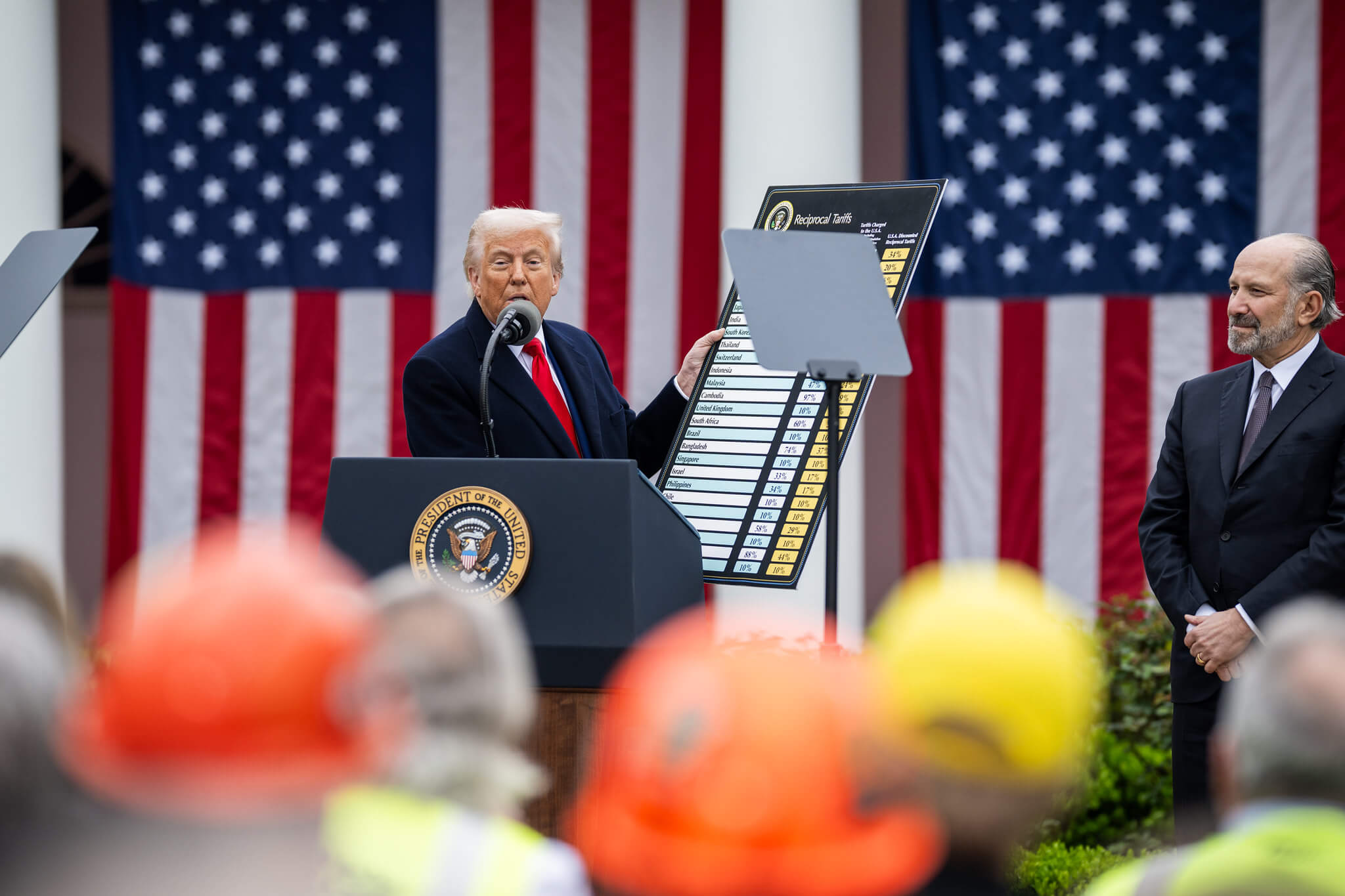The Cislunar Competition
.jpeg?sfvrsn=e491042c_5)
Published by The Lawfare Institute
in Cooperation With

Editor’s Note: Space is once again an arena of great power competition. My Center for Strategic and International Studies colleague Clayton Swope, drawing on his excellent long research paper “Salmon Swimming Upstream: Charting a Course in Cislunar Space,” finds that the cislunar area is one of increasing activity and competition, especially between the United States and China. Much of it, however, has only loose governance, and U.S. policies and priorities need to be clarified.
Daniel Byman
***
Over the next several years, many future space endeavors will happen in cislunar space, or the region from geosynchronous Earth orbit out to and including the Moon. Notably, U.S. cislunar plans include returning humans to the Moon, investing in cislunar infrastructure, and trying to jump-start a cislunar economy. China has its own cislunar game plan, as do many other nations and companies. This dynamic environment—which many observers are calling “Moon Race 2.0”—accentuates existing policy, regulatory, and governance gaps applicable to all parts of space, including near and on the Moon. How the United States addresses cislunar infrastructure and operational challenges should be shaped by a clear-eyed understanding of U.S. cislunar goals—in particular, what the U.S. wants to do on the Moon—and also increased U.S. emphasis on Mars, identifying opportunities for lunar endeavors to complement and accelerate plans for the Red Planet.
Although there is a lot of buzz about cislunar developments and significant national investments by the United States and China in their respective lunar programs, there is no evidence of a lunar gold rush because there is no market-based cislunar economy. Almost all cislunar activities will be tied to government funding and support, even for missions executed by the private sector. But cislunar space looks more diverse than it did during the 1960s, when the only players were the United States and the Soviet Union. Today, more countries, and even private-sector operators, are getting the chance to send payloads to the Moon, taking advantage of cislunar rideshare services offered by several companies. To date, cislunar missions are focused primarily on scientific research and exploration.
The international framework that governs cislunar space is almost 60 years old, based on the Outer Space Treaty (OST) of 1967. A remarkable diplomatic achievement negotiated at the height of the Cold War, the OST drew inspiration from the Antarctic Treaty of 1959 and applied arms controls and peaceful-use principles to outer space. Like Antarctica, there is currently no compelling strategic military value in cislunar space and no sign of one developing in the next decade. But unlike the Antarctic Treaty, which established a consultative mechanism for treaty modifications, the OST did not create a process for updating and clarifying treaty provisions. The rub is that a lot has changed in space since the 1960s, with space being used in ways that could not have been foreseen over 60 years ago.
A mirror image of what space looked like in the 1960s, space today is dominated by commercial and nongovernment actors, with thousands of satellites in orbit and many thousands more on the way. The OST was not designed for this type of space environment. The ramifications from this disconnect on space governance are exacerbated by a general lack of agreement by OST signatories on the meaning of certain key words and phrases of the treaty. At this point, gaps in international space governance have emerged on mainly three topics: permissible activities in space, property rights and use of space resources, and rules of the road for space. These gaps apply to cislunar space like all other areas of space, so solutions should apply broadly to space.
On top of governance issues, operators of cislunar missions are confronted with operational and infrastructure challenges, such as power generation, communications, navigation and timing, debris removal, and traffic coordination and collision avoidance. In most cases, there is both a technical and an engineering element to the problem, as well as an aspect that relates to operator-to-operator coordination and information sharing. These infrastructure and operational challenges grow proportional to the number and complexity of missions in cislunar space. As any fan of the city builder video game SimCity will know, infrastructure must scale with an increasing population.
Over at least the next decade, the United States seems poised to expand its cislunar equities through Artemis and other initiatives, investing in lunar infrastructure and creating an ecosystem of commercial cislunar services for things like transportation and communications. To a large degree, the success of these endeavors hinges on the ability of the United States to address cislunar governance, infrastructure, and coordination challenges. Over the long term, success also depends on eventually finding a commercial business reason for doing things in cislunar space and on the Moon.
To begin finding solutions, policymakers will want to consider a few things. First, the best solutions for facilitating the safe and secure development of cislunar space should involve an understanding on cislunar governance between the United States and China, as the vast majority of cislunar activity over the next decade will be tied to these two nations. A lack of consensus on cislunar rules and definitions increases many dimensions of risk: risk of misunderstandings, risk of collisions, risk to businesses and investment decisions, risk to life and property, and risk of conflict. In the best case, answers to cislunar governance questions could be applied to address these same gaps affecting other parts of space.
Second, the United States should consider international approaches to building and operating cislunar infrastructure, including space situational awareness systems (that is, the ability to track satellites in cislunar space), combining resources, preventing duplication, and maximizing the gain for the cost to U.S. taxpayers. The United States used this approach to develop the International Space Station, as well as the Artemis program. Ideally, investments in cislunar infrastructure would also support future missions to Mars and other crewed and uncrewed missions even farther afield.
Finally, the United States should consider whether it furthers U.S. interests to keep cislunar space non-militarized, mirroring the U.S. playbook on Antarctica in the 1950s. Should China agree to keep cislunar space non-militarized, which it may very well not agree to, verification measures will be important. China would need to be significantly more open about what it is doing in cislunar space, creating a way for U.S. officials to inspect payloads before launch, similar to how nuclear arms control agreements with the Soviet Union permitted on-site inspections. To date, however, China has not even acknowledged all launches intended for the Moon until after the spacecraft are well on their way. Additionally, the United States will need improved cislunar space situational awareness to keep tabs on China’s missions once in space.
Future developments that can be predicted but not precisely timed will probably change these conclusions. Someday, when a cislunar activity produces significant commercial value, there will be a market-based lunar economy no longer dependent on government funds. Dramatically lowering launch and transportation costs to the Moon may also generate new lunar business cases and create commercial value. One day, there will undeniably be a military presence beyond near Earth orbits, in cislunar space and beyond. That could happen sooner rather than later, for example, if the United States and China, ignoring the precedent of Antarctica, cannot agree to forestall the equivalent of a cislunar colonial land grab and arms race. But it is not currently in U.S. interests for that to happen in the near future. Doing so now uses military resources that could be better used nearer to Earth protecting vital U.S. interests and deterring China and other possible adversaries closer to home.
Ultimately, the cislunar calculus fundamentally changes if—probably when—large numbers of humans are born, live, raise families, and die on the Moon and in other parts of the solar system, like Mars. Many of us foresee that future. But that is not in the 10-year plan, maybe not even in the 25-year one. For now, the focus should be on clarifying U.S. cislunar priorities, particularly how they fit into plans for Mars, and improving governance and infrastructure.





